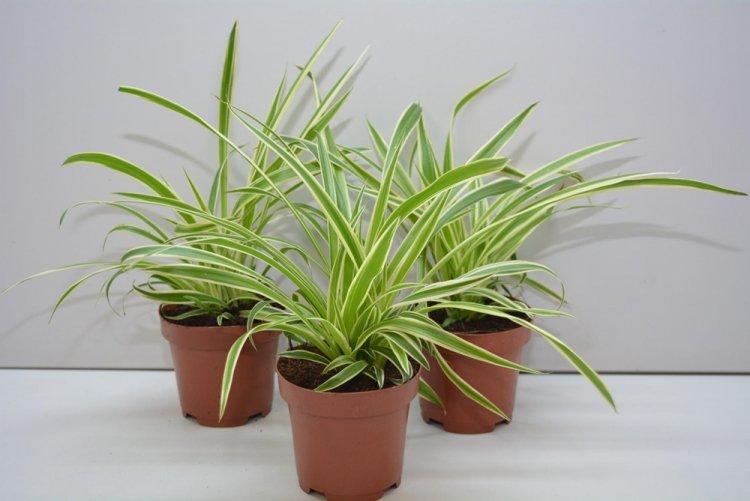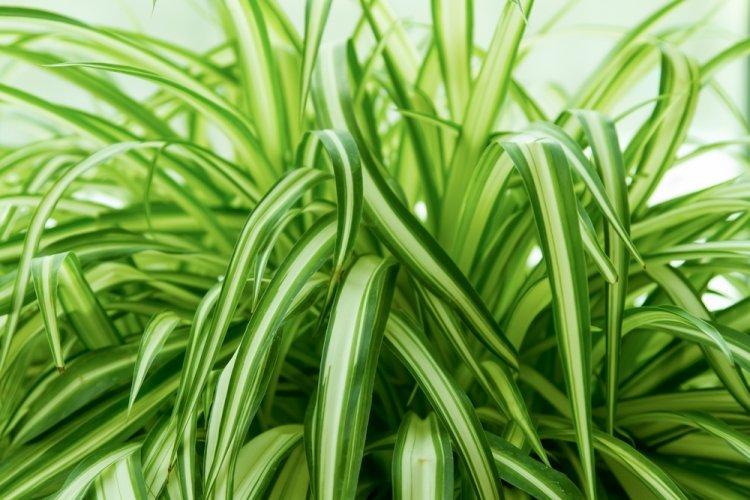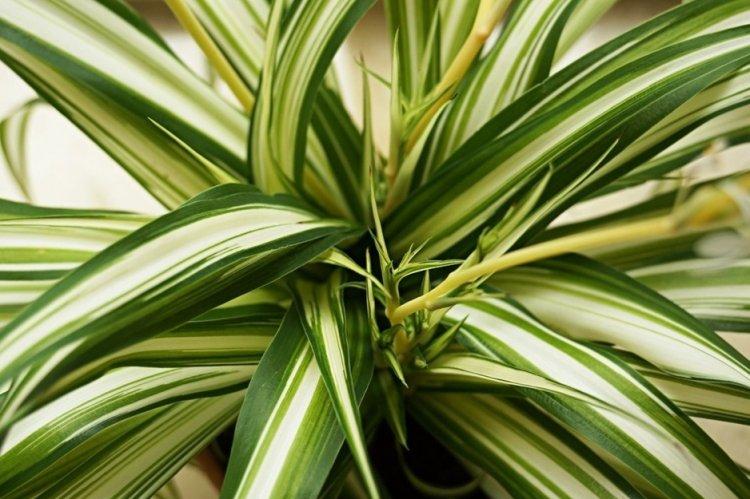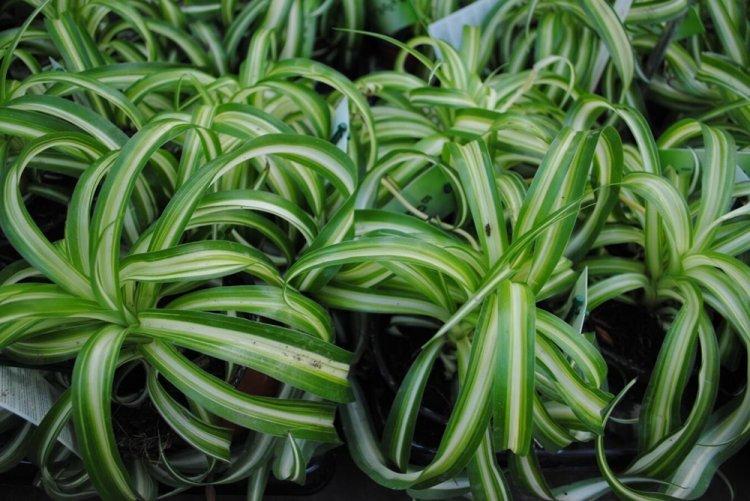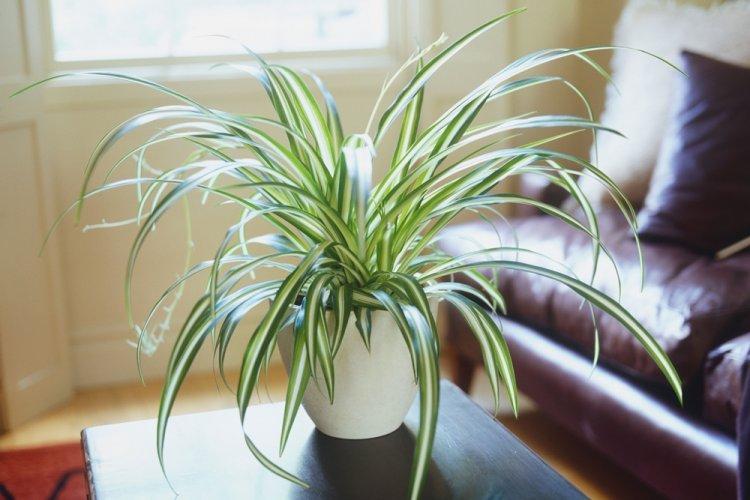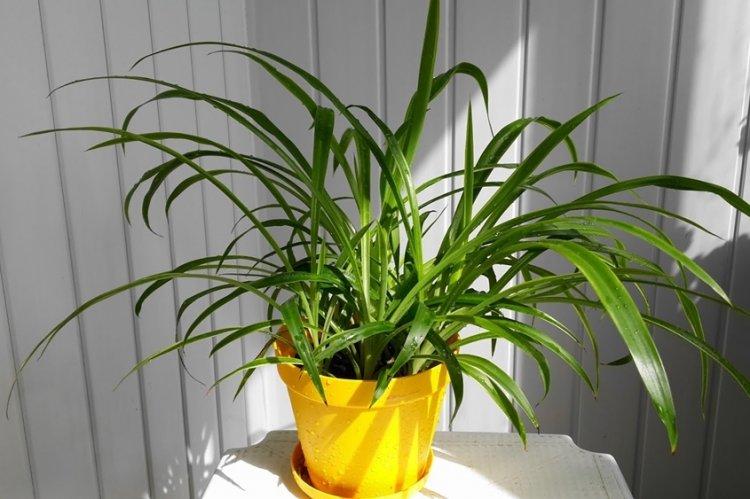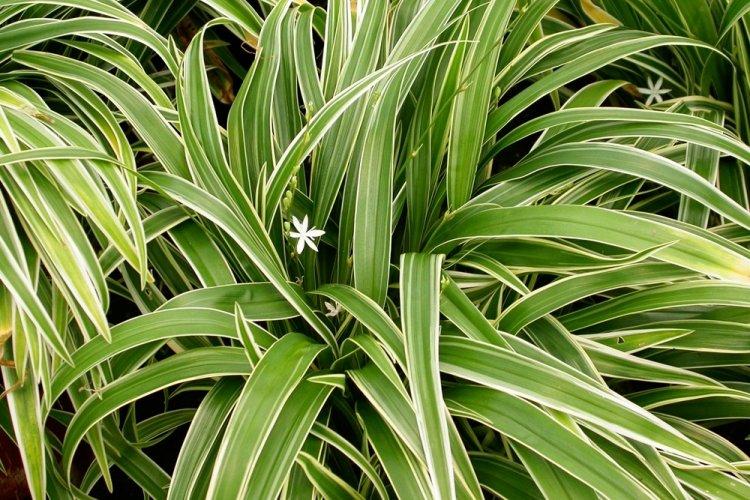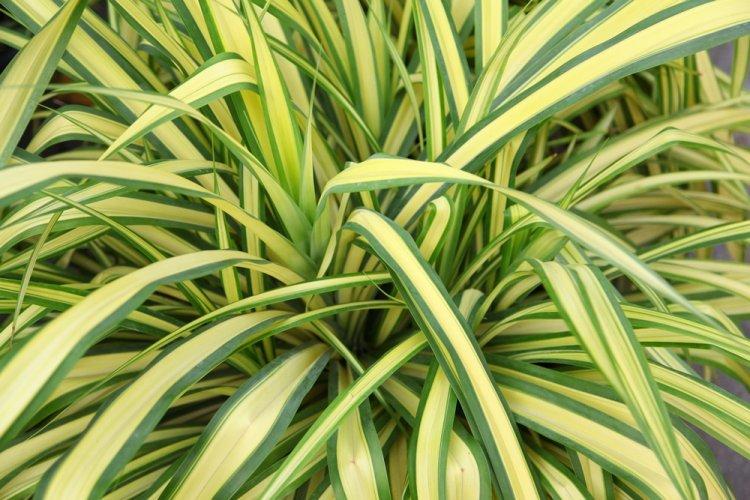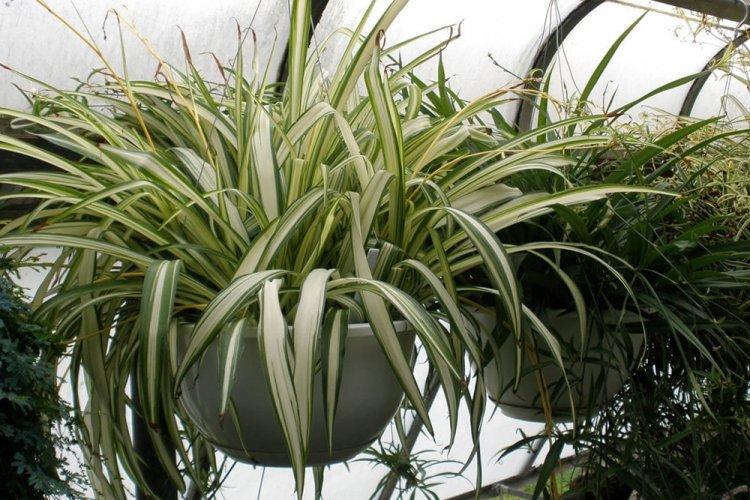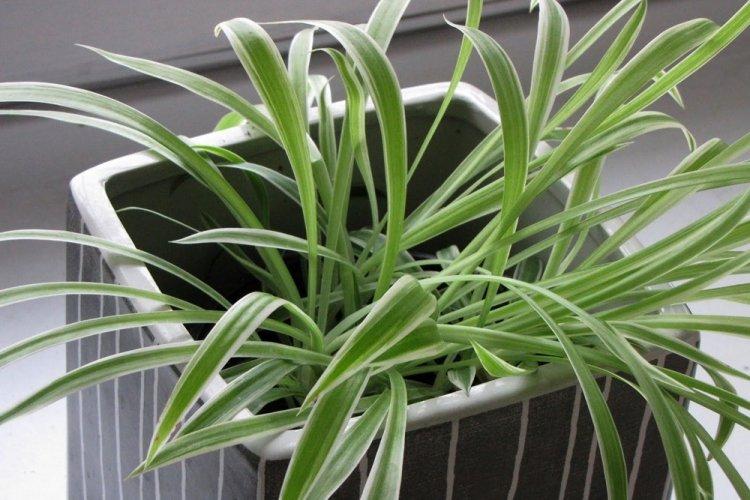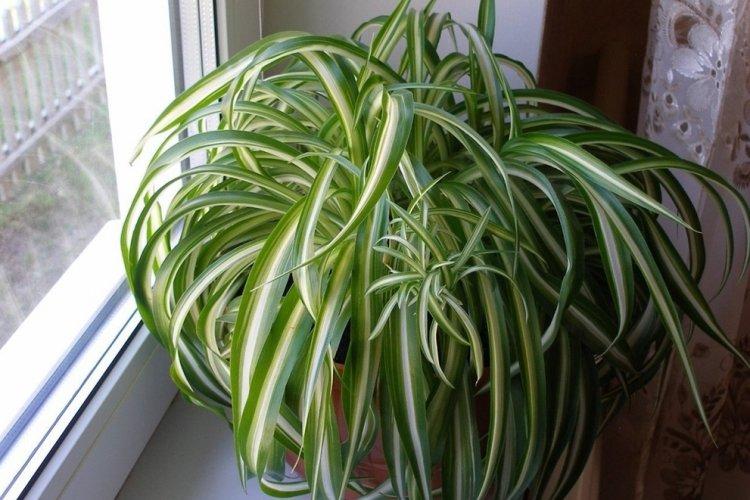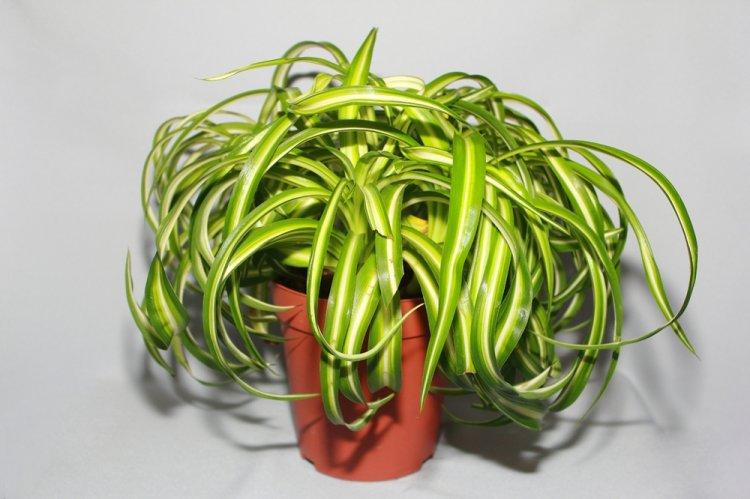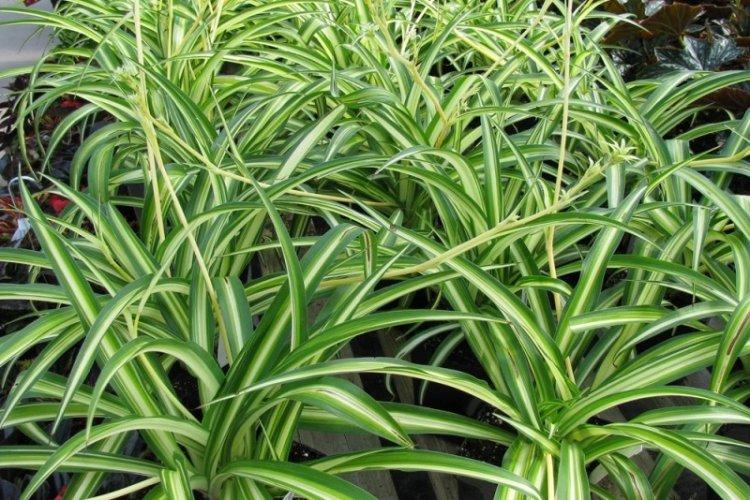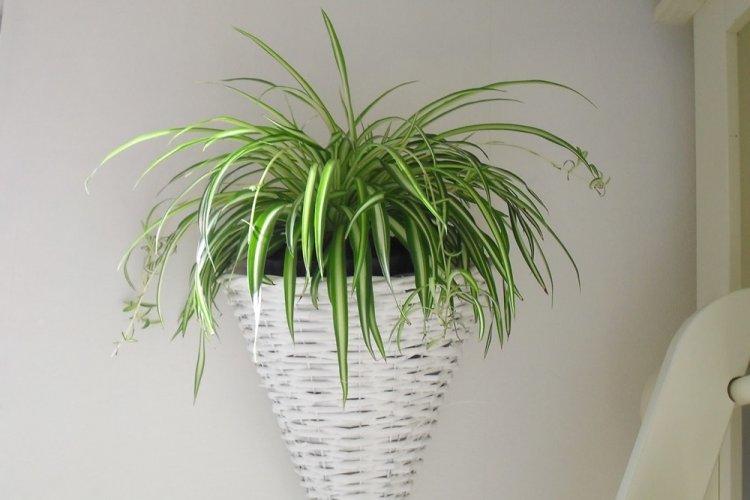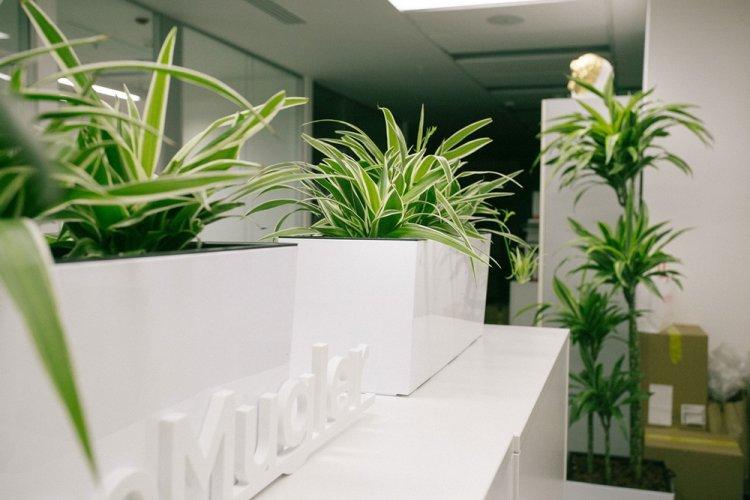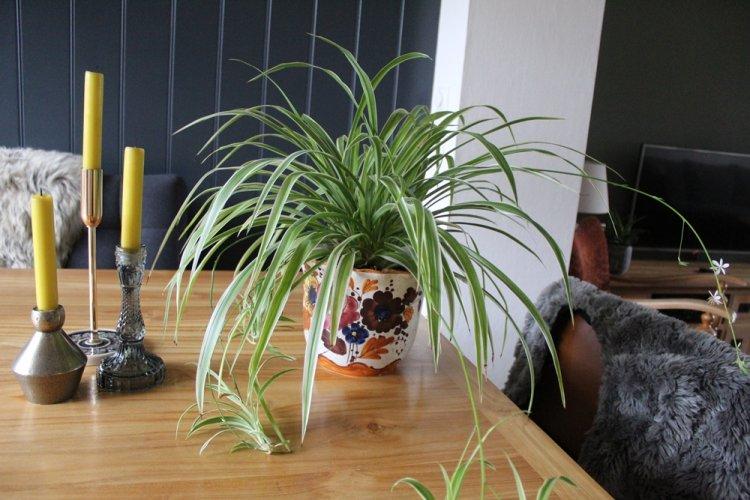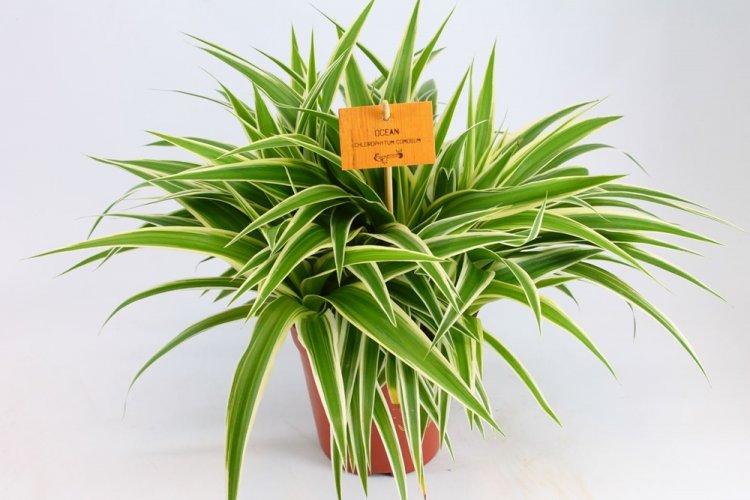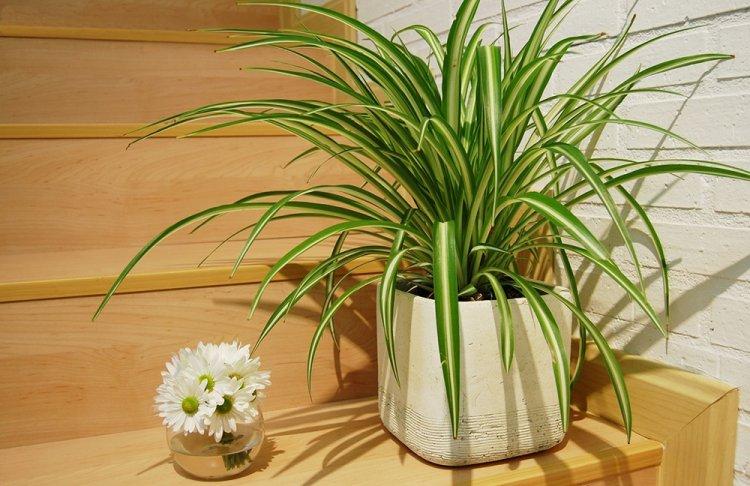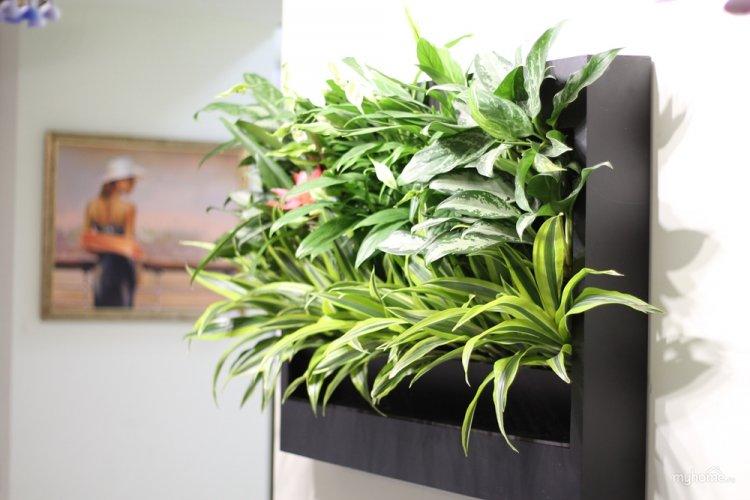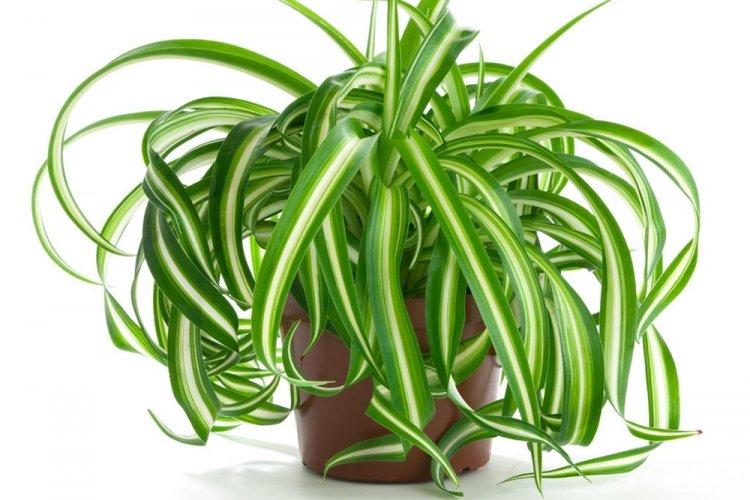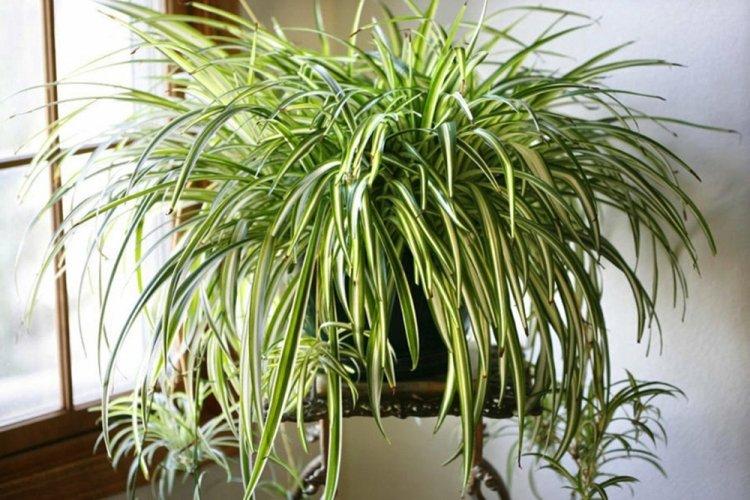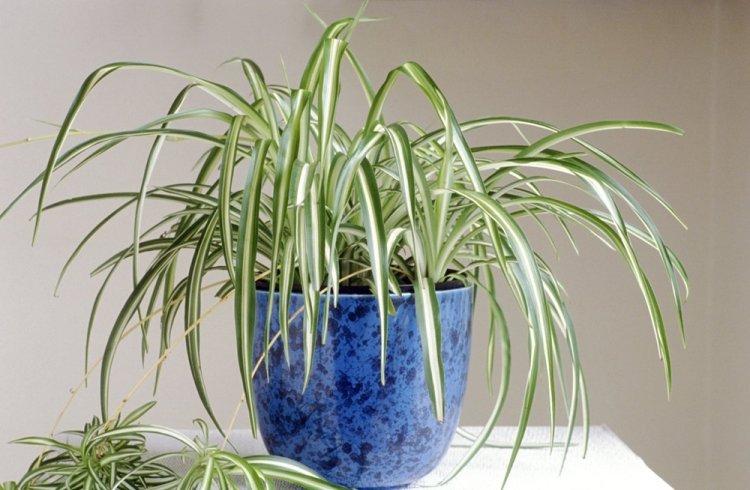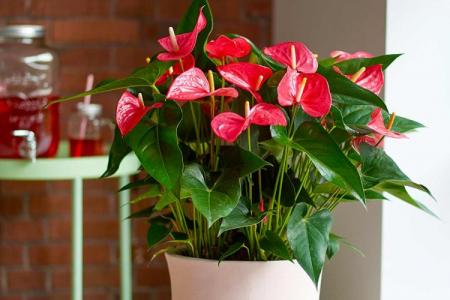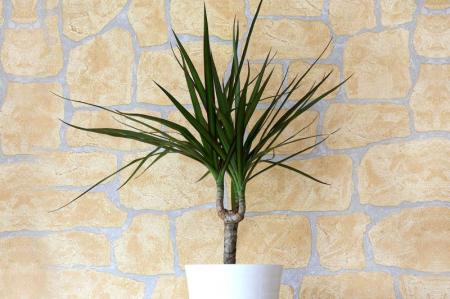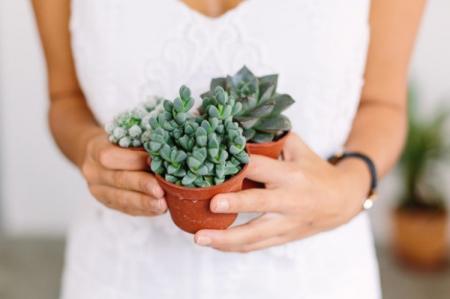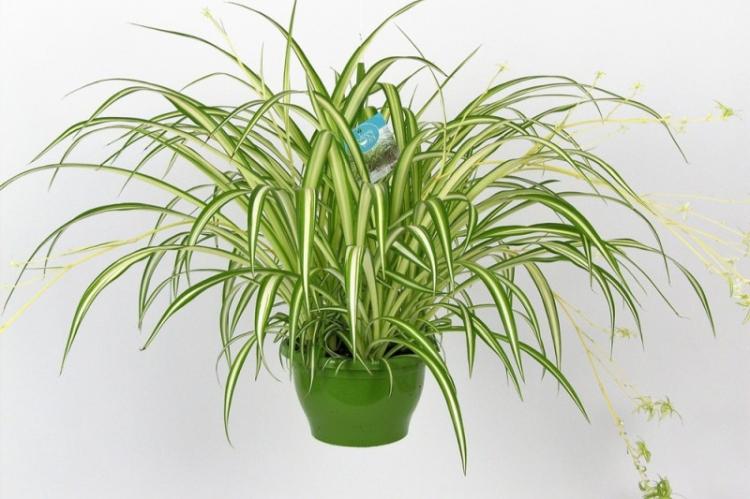
Do you remember that very flowerpot with thin striped leaves-feathers hanging in all directions? Chlorophytum is another guest of tropical latitudes, which has long settled in our apartments. We will tell you how to plant chlorophytum, how to make sure the leaves do not dry out, and what is needed for a flowerpot to delight with beauty and elegance for more than one year!
general information
Chlorophytum belongs to herbaceous plants, and it looks about the same. It has a tuberous root that stores nutrients. The short stem almost at the very ground breaks up into long elongated lanceolate leaves up to 50 cm long.
The chlorophytum rosette is especially good during the flowering season when it produces long arrows with small white flowers. They look surprisingly springy and familiar to our latitudes. It is believed that in the kitchen, offices and enterprises, a small green corner with chlorophytum effectively cleans the air from gases and formaldehydes.
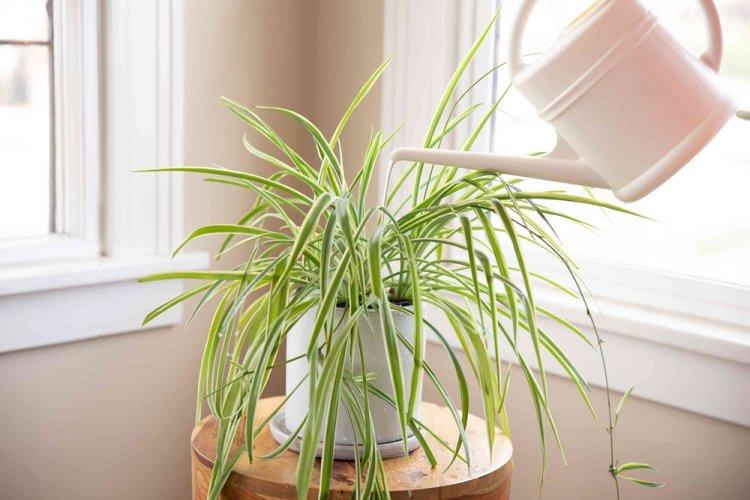
Chlorophytum types
Chlorophytums are similar to each other and belong to the same lily family. It is not known exactly how many varieties exist in nature, but botanists agree that there are about 200-250 of them. Only a few varieties are popular on our windowsills - let's figure it out in more detail!
Chlorophytum crested
It is a beautiful bright perennial with very narrow and long leaf blades. Depending on the variety, it can be of different colors: Variegata with a silver edging, Vittatum with a whitish stripe in the middle, variegated Laxum with a white edging. Most of them have a neat symmetrical rosette, but there is still the same Laxum, resembling a fan, and the spiraling Ocean.
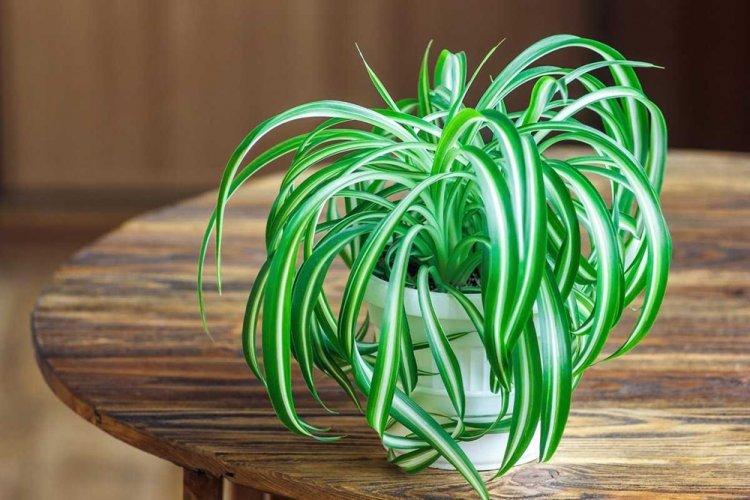
Chlorophytum Cape
This is a monochromatic species with narrow-lanceolate feathers up to 60 cm and up to 3 cm wide. An interesting feature of the Cape Chlorophytum is the uniform, uniform color of a rich grassy color. In dense rosettes there are no long "whiskers" with layering, so the bush is propagated by division.
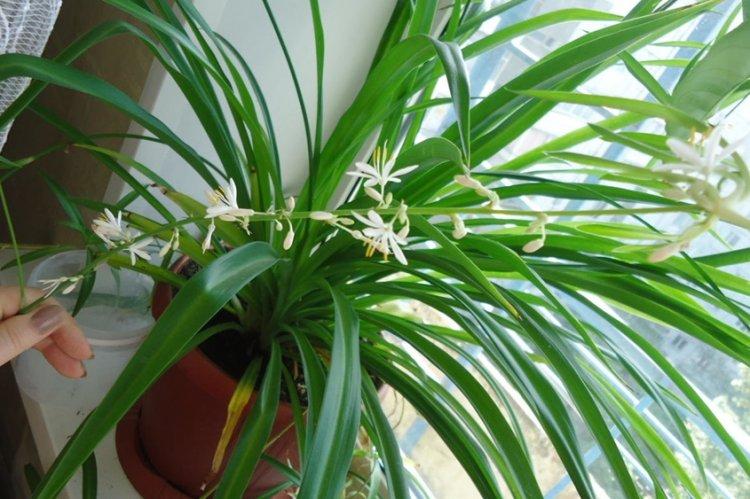
Chlorophytum curly
A neat compact flower seems much smaller than its congeners due to the specific shape of the foliage. Long narrow plates seem to be twisted in a spiral, therefore they do not so clearly disintegrate into a rosette. A wide whitish stripe in the middle stands out against a dark green background.
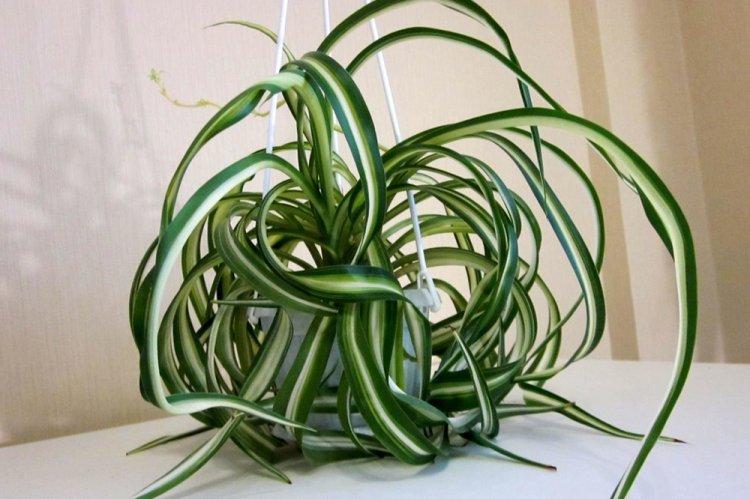
Winged chlorophytum
Winged chlorophytum is also called orange for the characteristic color of the petiole and central vein. The bush is not too large - up to 40 cm in height, but it looks very impressive due to the contrasting green-orange transition. In season, it produces a short peduncle with an inflorescence-cob.
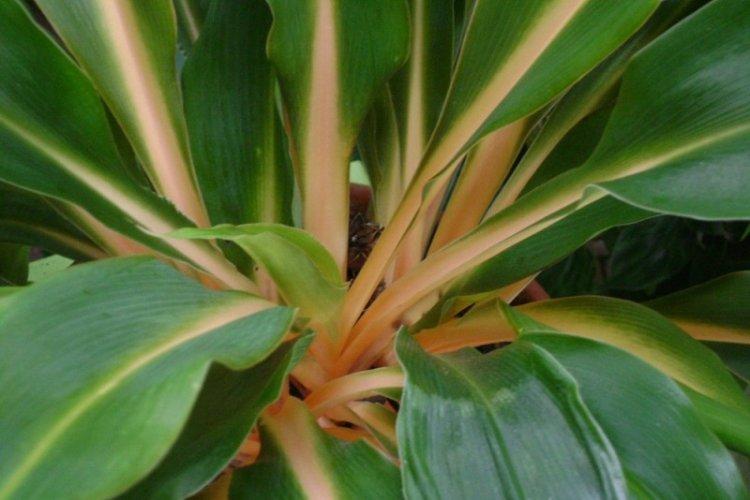
Chlorophytum care
Chlorophytum has long been acclimatized and is not very specific in care, especially in comparison with more exotic brethren. He needs warmth, fresh air, active watering and stable rest during the cold season. In return, you get a decorative green friend with a lush leafy rosette.
Temperature
Chlorophytum is not as sensitive to temperature changes as most liliaceae. The usual room temperature is suitable for him, if it is above 10-12 degrees. In summer, the flowerpot is good on the balcony or even outside in the sun, but protection from rain and drafts is needed.
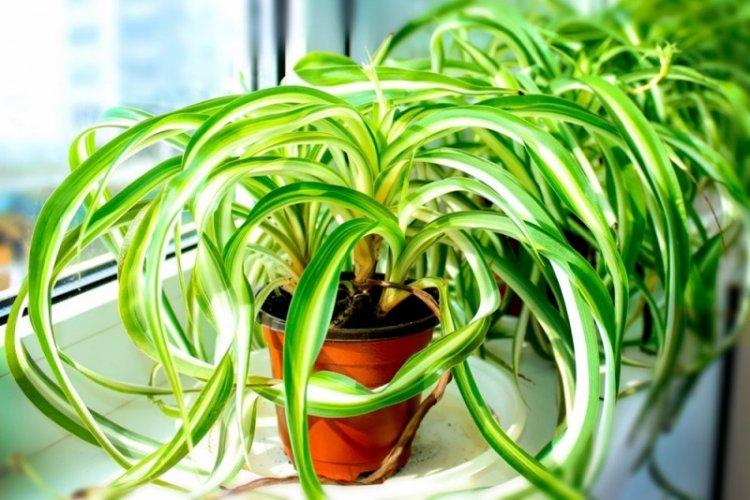
Lighting
The ideal conditions for chlorophytum are bright but diffused sunlight. It is not particularly sensitive, so it can even withstand direct sunlight, but better avoid this situation. Variegated varieties require more light than monochromatic varieties, otherwise they will fade and fade.
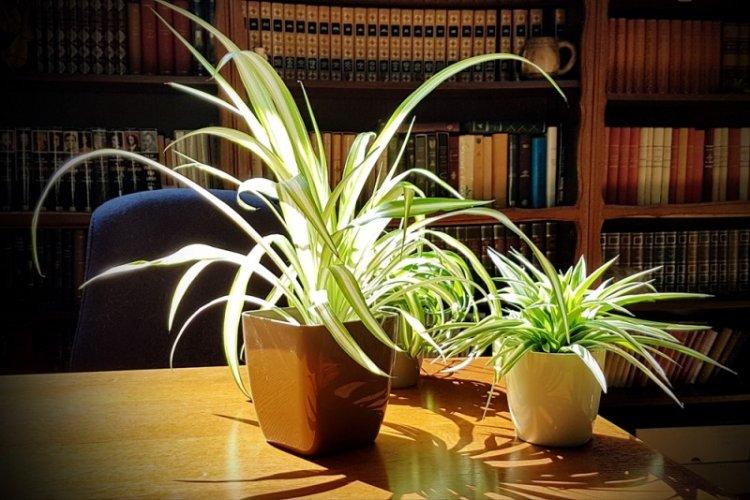
Watering
In spring and summer, green chlorophytum requires regular and frequent watering, otherwise it will develop worse. The lack of moisture can be seen by the deformation of the root tuber - a thickening will appear, in which the flower urgently deposits reserves. In winter, it is important to avoid stagnant water, so wait for the substrate to dry at least a quarter.
Otherwise, the usual average humidity of the living room is enough for chlorophytum. So if the flower turns green and feels good, it is not necessary to constantly spray and wash it. Although if you periodically spray the plant with a spray bottle, it will grow faster.
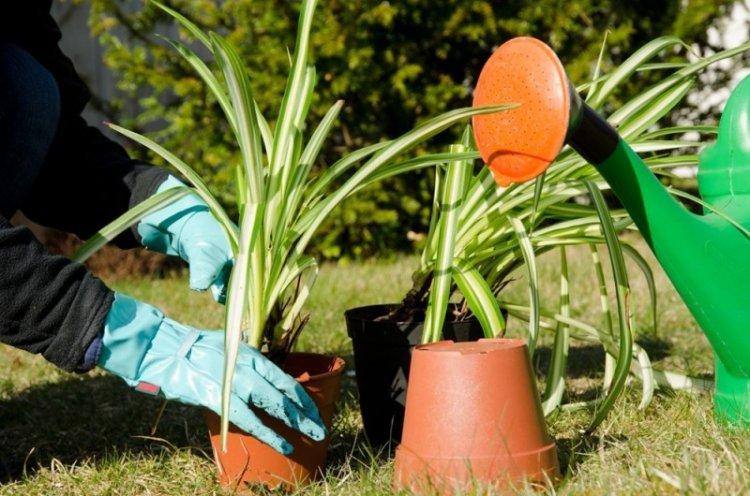
The soil
Take a regular loose deciduous soil mixture and add turf and humus soil to it. Mix them all in equal parts and add some more sand - about half of the same part. Choose a spacious, wide flowerpot and be sure to lay good drainage on the bottom.
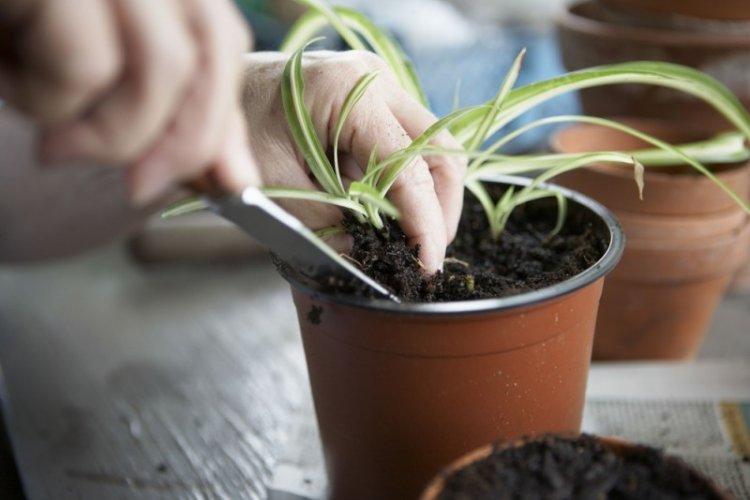
Fertilizers and feeding
If you have good soil, you do not need to constantly feed chlorophytum. It is enough to apply a little organic or mineral fertilizers every 2-3 weeks from spring to summer.
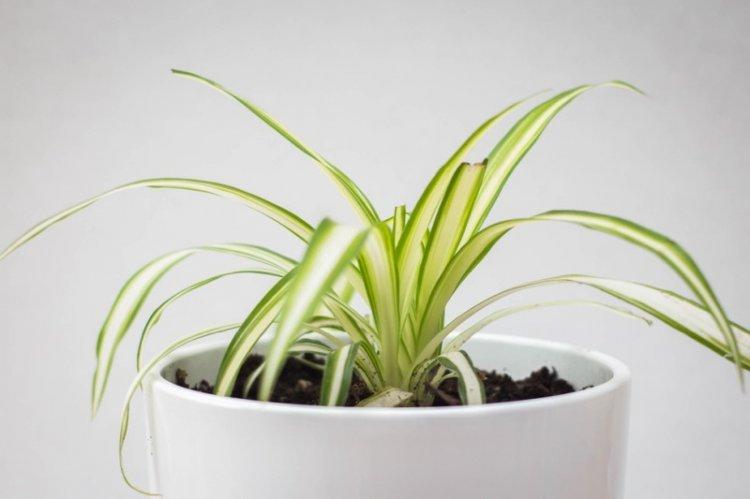
Transplant and reproduction
Chlorophytum is transplanted as needed and grown in a larger pot. It is better to do this at the end of winter or at most in the very first days of spring. When the bush matures and stops growing so actively, replant it every 2-3 years.
Growing chlorophytum from seeds is a long and difficult process: the seeds need to be soaked, the water must be changed regularly. Then distribute them over the soil mixture and make an impromptu greenhouse under film or glass. It will take up to 2 months before the appearance of the first seedlings - and only after that you can gradually remove the shelter and accustom the plant to "adult" life.
The easiest way to propagate chlorophytum is by layering, of which a lot is formed in almost all indoor species. It is enough to carefully cut them off, root them in a glass of water and transplant them into your pot.
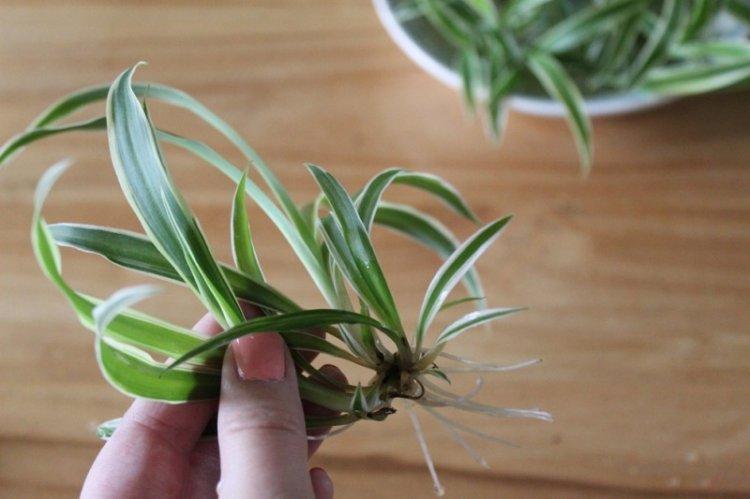
Pest and disease control
Indoor chlorophytums have almost no insect problems. Occasionally you can see aphids, spider mites or worms, but ordinary store insecticides are enough against them. Most of the common problems are somehow related to improper care - watering, humidity, lighting and temperature.
If the tips of the leaves turn yellow and brown, then chlorophytum lacks useful trace elements. To do this, normalize and stabilize the feeding regime or increase the frequency of fertilization - every 14-15 days. But the more chaotic yellow and brown dots most often appear due to the heat in the room.
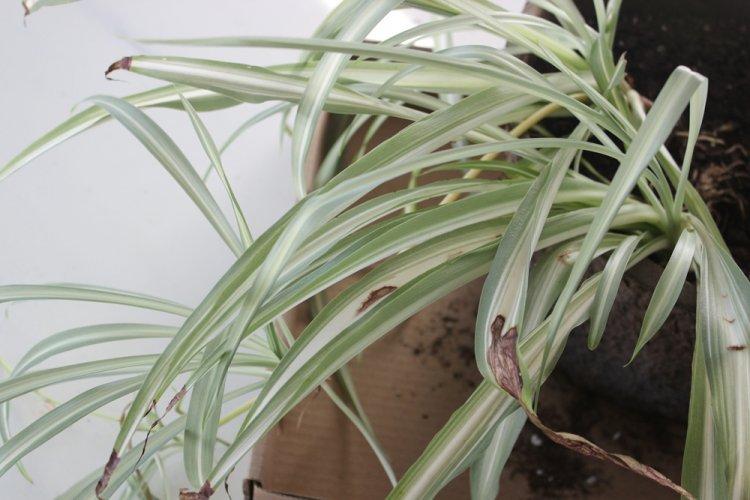
If the leaves turn pale and wither, then most likely the flower does not have enough light. In the case of variegated varieties, they may not fade, but become monochromatic. When it is impossible to increase the amount of sunlight, put special phytolamps on chlorophytum.
There are two main reasons for the appearance of rot - an excess of moisture or too dense knocked down soil. If chlorophytum does not bloom and begins to grow worse and release layers, it is too cramped in the flowerpot. Too young bushes do not bloom in the first couple of cycles after planting.
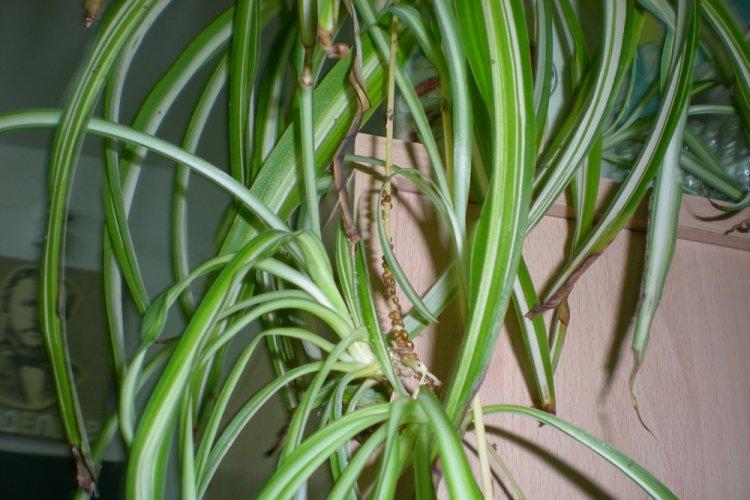
Chlorophytum - photo
Chlorophytum is a popular guest of home green corners, and all thanks to its spectacular appearance. Healthy rosettes are always lush, thick and bright. For this they are especially appreciated by interior designers and amateur flower growers!
